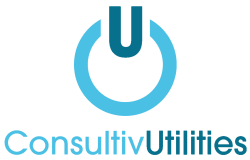Over the past 18 months, Europe’s gas sources for heating and power generation has changed dramatically. Since the Russia/Ukraine conflict began, the Continent has weaned itself off gas supplied via Russian pipelines. Instead, it has turned to sources of imported liquefied natural gas, or LNG.*
European demand for LNG has surged 71% when compared to 2021 levels. It now accounts for around 35% of all gas supplies in the region.
For us in the UK, liquified natural gas has long been an important energy commodity. We’ve seen imports increasing over the past decade to meet the shortfall created by falling levels of North Sea gas.
But the increased requirement from Europe – along with rising global demand – impacts our domestic energy market.
Asia, in particular, is a major competitor for imports, with Japan and China now the world’s two largest LNG consumers.
Why is LNG growing in popularity?
Aside from the decline in Russian gas imports to Europe, there’s a number of factors behind the global shift towards LNG:
Lower emissions – it has a lower carbon footprint compared to other fossil fuels such as coal and oil. This makes it a more attractive option for countries seeking to bridge the gap to using cleaner energy sources.
Energy security – it can be sourced from a variety of countries, reducing dependence on a single source of energy.
Reduced logistical costs – the cost of LNG has fallen in recent years due to increased supply and more efficient production and transportation methods.
Technological advancements – new techniques have made it easier and more cost-effective to extract, liquefy and transport.
Regulatory support – governments in many countries have introduced policies to encourage the use of LNG as a cleaner and more secure source of energy.
Are wholesale prices rising?
As a result of increasing global demand, we’re seeing higher prices and greater volatility in the LNG market. This is leaving consumers more vulnerable to wholesale pressures.
But unlike mainland Europe – which doesn’t yet have sufficient shipping terminals, storage and regasification facilities or distribution networks to accommodate more direct supplies of LNG – we already have this infrastructure established in the UK.
And we use it to export supplies to Europe, acting as a land-bridge to supply gas (after first regasifying it) from our LNG terminals out through existing pipelines to Europe.
Who are the global players?
In terms of suppliers, Qatar has long been the world’s largest exporter of LNG, accounting for around 32% of global exports. Australia comes in second place, with a significant portion of its LNG exports going directly to Asia.
The United States has also become a major exporter in recent years, with significant LNG export facilities now on the Gulf coast. Russia also exports LNG, with significant exports to Asia and far less now to Europe.
What lies ahead?
Looking ahead, European demand for LNG imports is expected to remain strong throughout the remainder of 2023, as the Continent looks to stockpile gas in preparation for winter, following the introduction of new storage regulations.
It is also anticipated that there will be a higher demand for this coming winter than last. This is because European winter temperatures are expected to return to seasonal norms after last year’s milder weather. However, the main price risk is the potential for further geopolitical tensions and conflicts that could disrupt the global supply of LNG.
Looking longer term, the scope for LNG prices will depend on a number of factors. These could be advancements in renewable energy technologies, changes in government policies, and the emergence of new energy sources. However, it’s unlikely that the key role liquified natural gas plays as an essential part of the energy mix is likely to wane any time soon.
The LNG market has therefore become a key driver to watch when tracking not only where gas, but also power prices, are heading.
Press HERE to allow one of our experienced members of staff assist you further with your energy bills.
Credit: NPower
Categories:

